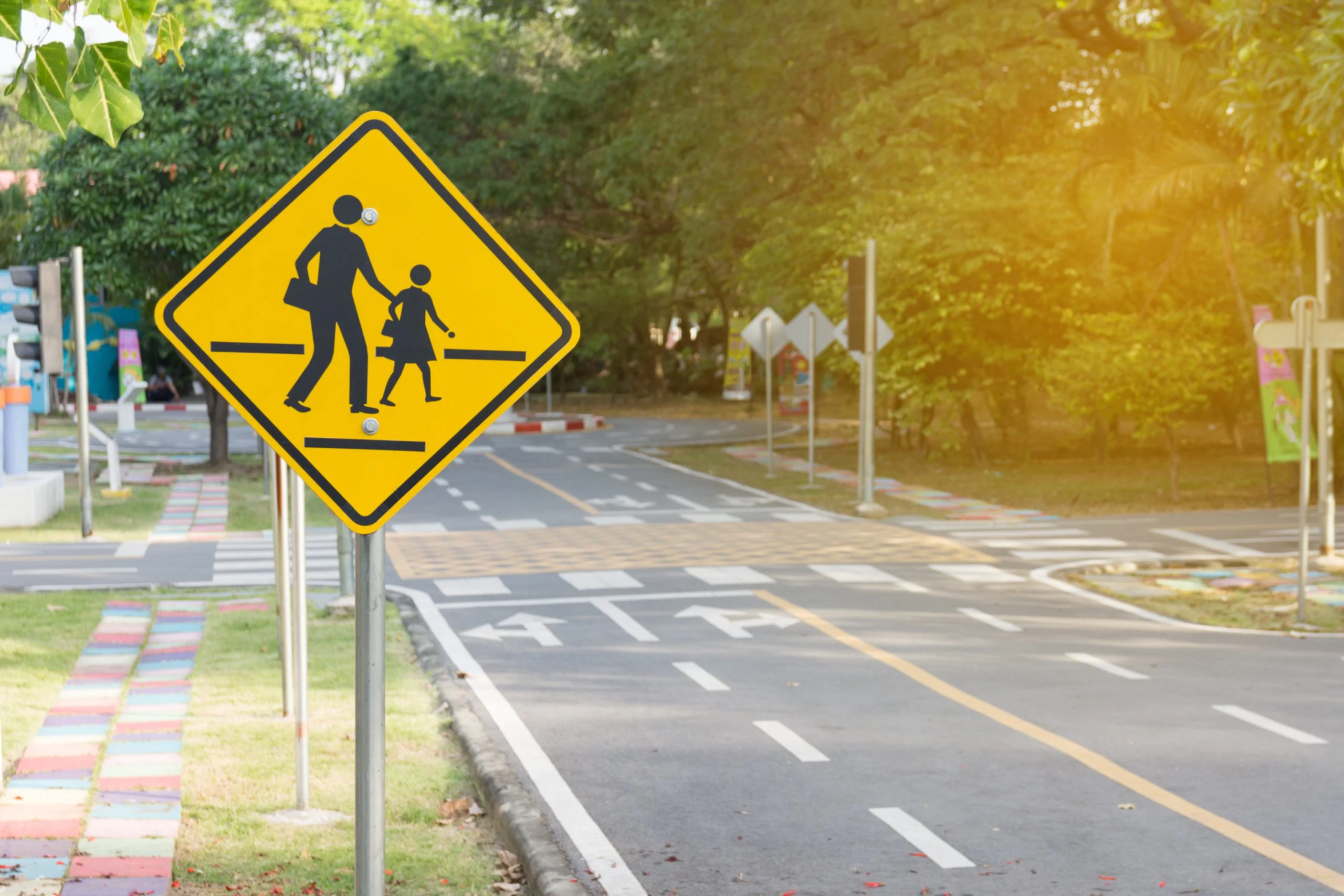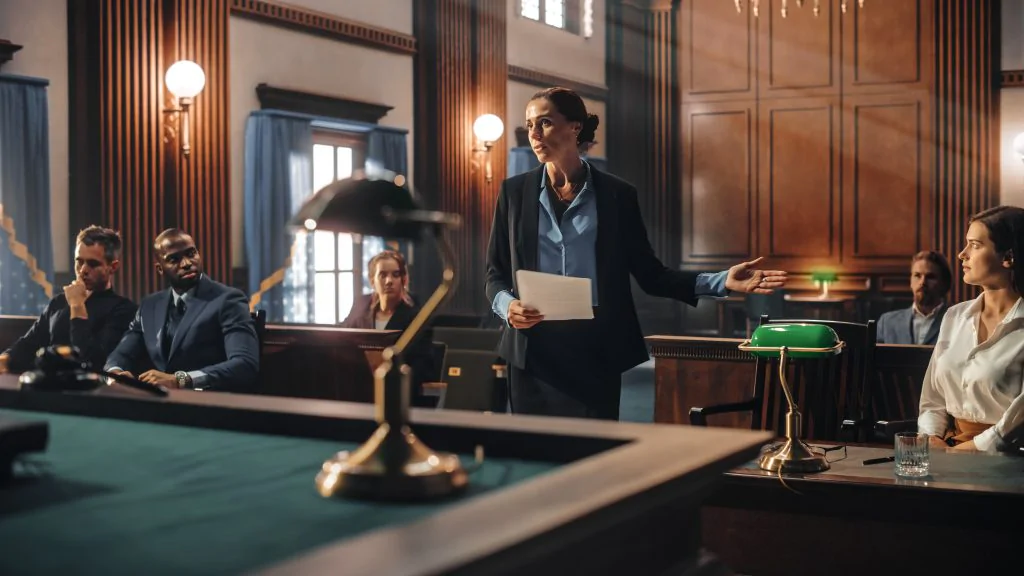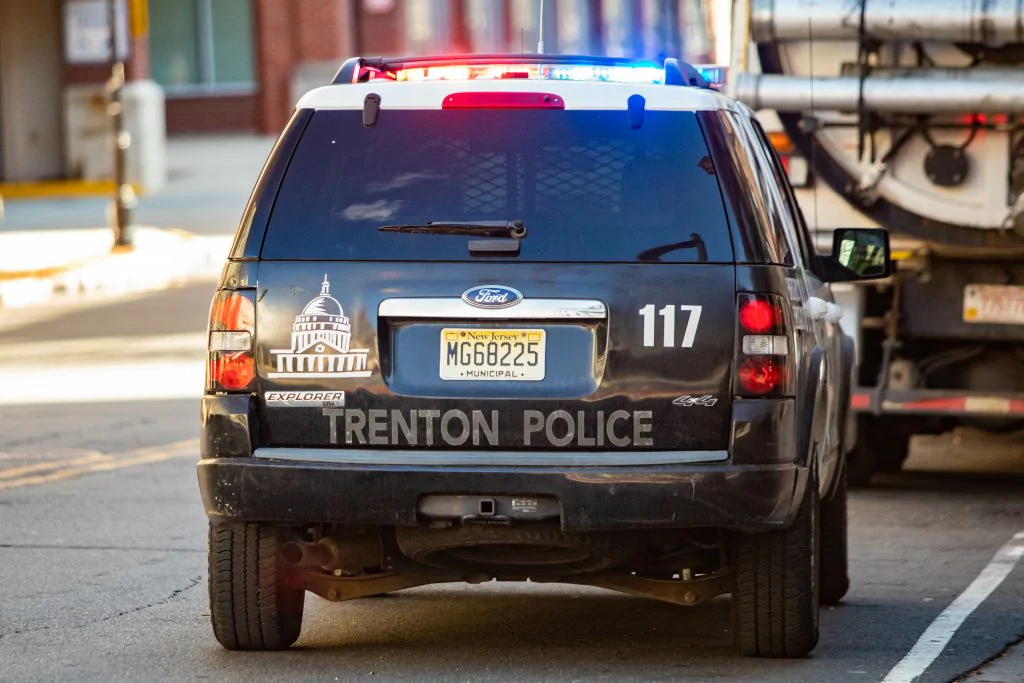When a driver or pedestrian “fails to yield” to another vehicle or person, they may be guilty of causing an accident by not following right-of-way laws as outlined in the New York Vehicle and Traffic Law Code. The resulting accident may lead to driver or pedestrian personal injuries, or even wrongful deaths.
Drivers and pedestrians must both understand failure to yield laws in New York. In some circumstances, an injured victim may sue the at-fault party for compensation.
Failure to Yield Laws in New York
New York has very specific right-of-way and vehicle traffic laws, as outlined in New York’s Vehicle and Traffic Law Code, or NY VTL. Title VII, Article 26 explores the rules that both drivers and pedestrians must follow regarding right-of-way on the road, on crosswalks, and more.
Failure to Yield Laws for Drivers
Drivers have more laws regarding failure to yield than pedestrians. For example, NY VTL Section 1142(b) states that motorists “must yield to any pedestrian” crossing a road on which they are traveling. This is true even if the pedestrian is jaywalking or not crossing the street legally – drivers are not allowed to simply continue on their way and cause harm to the pedestrian.
Furthermore, NY VTL Section 1151 states that drivers must yield to pedestrians who are crossing within a crosswalk legally, even if there isn’t a traffic signal or sign. Additionally, a driver may not pass another if the first driver is stopped to let a pedestrian cross at an intersection.
Other notable failure to yield laws for drivers include:
- NY VTL Section 1140 – Drivers must yield the right-of-way if they approach an intersection and another vehicle has already entered the intersection from a different highway. If two vehicles enter an intersection from separate highways at the same time, the vehicle on the left yields the right-of-way to the vehicle on the right.
- NY VTL Section 1141 – A vehicle intending to turn left within an intersection will yield the right-of-way to a vehicle approaching from the opposite direction.
- NY VTL Section 1142 – A vehicle driver must stop at a stop sign. All vehicles must yield the right-of-way to any vehicle that enters the intersection first (such as in a four-way stop sign intersection).
- NY VTL Section 1143 – A driver about to enter a roadway has to yield the right-of-way to any vehicles approaching the roadway or that are already on the roadway.
- NY VTL Section 1145 – A vehicle approaching a rotary traffic circle or island must yield the right-of-way to a vehicle already traveling on the circle or island.
- NY VTL Section 1146 – Above all else, drivers must exercise “due care” to avoid colliding with bicyclists, pedestrians, or domestic animals.
- NY VTL Section 1151(a) – All drivers must yield the right-of-way to a pedestrian on the sidewalk if they are entering or exiting from a building, private road or driveway, or alleyway.
Failure to Yield Laws for Pedestrians
While drivers are responsible for following the majority of laws regarding right-of-way and bear the brunt of the consequences for failing to yield the right-of-way, pedestrians must also follow explicit laws as outlined in the NY VTL. These laws include:
- NY VTL Section 1150 – All pedestrians must obey traffic control signals when they are crossing a street. If the crossing signal is negative (i.e. an upraised hand or a “don’t walk” sign), the pedestrian must yield the right-of-way to motor vehicles.
- NY VTL Section 1152 – All pedestrians must yield the right-of-way to vehicles on a roadway if there is no crosswalk.
Negligence in Failure to Yield Accidents
In any failure-to-yield accident, the accused party must be proven to have been negligent for them to be found at fault. Negligence is generally understood to be any action in opposition to the hypothetical common sense or logical actions of a reasonable person. For example, driving while texting is negligent because it takes a driver’s eyes off the road and makes them inattentive to potential hazards or pedestrians.
In failure to yield accidents, negligence may be proven in circumstances including:
- A driver fails to yield the right-of-way to another driver at a four-way intersection. They cross into the intersection while another driver is already moving forward, leading to a collision.
- A driver fails to yield the right-of-way to a pedestrian crossing the street because there are no street lights or stop signs. They impact the pedestrian and cause significant injuries.
- A driver is texting and driving. They attempt to cross a two-way street and fail to yield the right-of-way to a car already moving, leading to a collision and serious injuries.
- A pedestrian fails to yield the right-of-way to oncoming traffic when a crosswalk sign says “Don’t Walk.” They cause one car to hit another motor vehicle to avoid impacting them, leading to an auto accident.
Compensation for Failure to Yield Accidents
In personal injury and motor vehicle accident lawsuits, one party’s failure to yield is often important evidence that may establish fault. By failing to yield the right-of-way appropriately, one party may be held liable for the victim or plaintiff’s medical bills, lost property, and more. Settlement amounts can vary depending on the circumstances of the case and the expenses incurred because of the accident.
For example, a recent failure-to-yield accident in the Hudson Valley involving a pedestrian and driver resulted in the pedestrian receiving $200,000 in compensation to cover medical expenses and pain and suffering. The driver failed to yield the right-of-way when the pedestrian was crossing a sidewalk in front of the entrance to a hotel.
In another example, a driver in New York City sued a pedestrian for failing to yield the right-of-way. The crosswalk sign was red, but the pedestrian crossed the street anyway. The driver impacted a light pole and damage was sustained to their vehicle. They received compensation to cover the cost of damages and minor injuries.*
*Sobo & Sobo does not cite actual settlement values for our clients’ cases, even anonymously, for reasons of privacy. From time to time, we may include publicly available individual case histories and ranges of general US settlement values that are published by reliable sources. These, however, should not be interpreted as representing Sobo & Sobo cases or suggest future outcomes at Sobo & Sobo.
How Pedestrian & Car Accident Attorneys Can Help
Pedestrian and car accident attorneys can be very helpful for plaintiffs who wish to receive the maximum amount of compensation possible. Specifically, car accident attorneys can:
- Ensure that plaintiffs gather sufficient evidence for their cases
- Help victims maximize settlement amounts, and minimize the amount of negligence they are found liable for in court
- Speak to law-enforcement representatives and obtain official police reports
- Keep in touch with clients 24/7 to make sure they’re up to date on their case’s progress, and ensure all deadlines are met
Contact Sobo & Sobo Today
With over 50 years of successful representation for auto accident and pedestrian accident clients, Sobo & Sobo is experienced in helping victims win the highest settlement amounts possible for any injuries related to failure-to-yield accidents.
Contact Sobo & Sobo online today or call 855-468-7626 for a free consultation. By proving that the at-fault party failed to yield the right-of-way, they can assist plaintiffs and ensure they receive the compensation they need to recover from their injuries and more.




